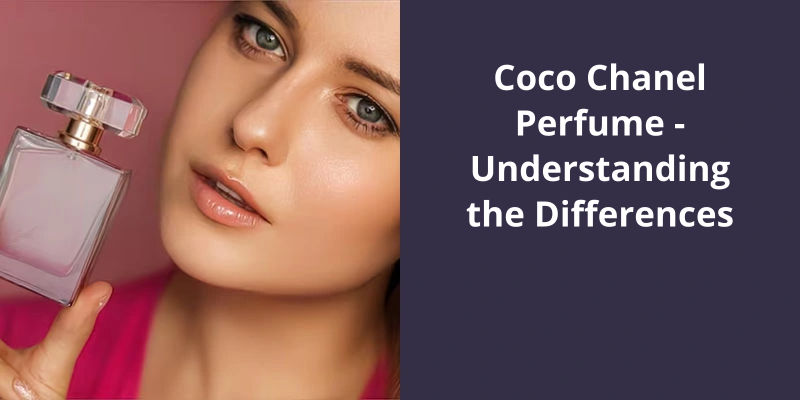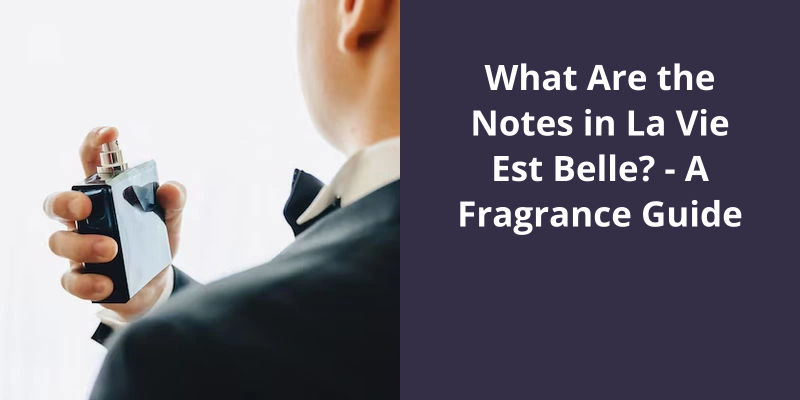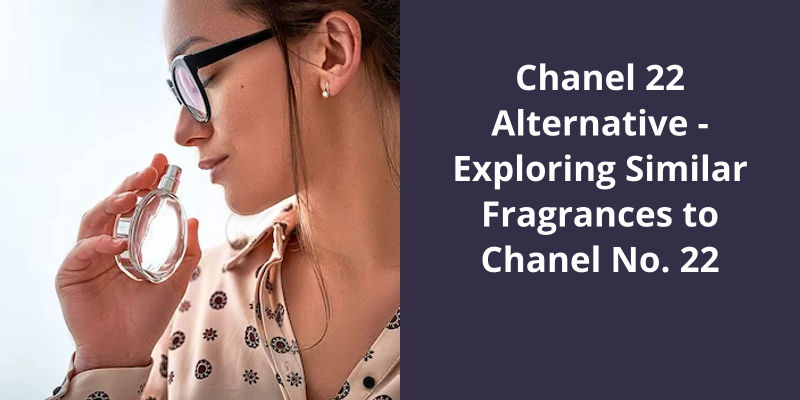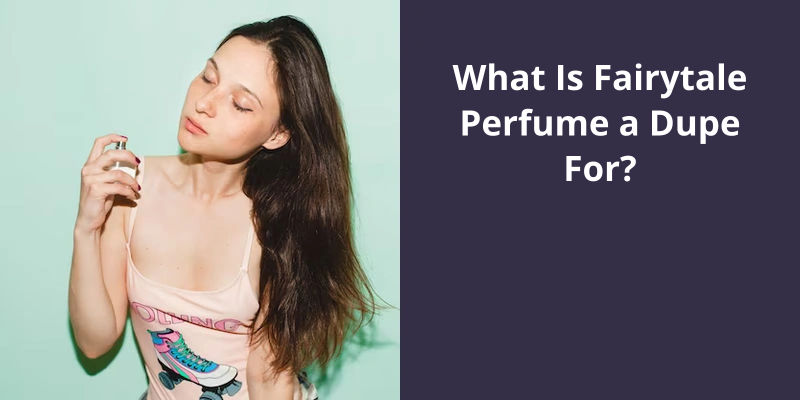Coco Chanel, the fashion icon who took the world by storm with her timeless designs, also left an indelible mark on the fragrance industry with her signature scents. However, what sets Chanel fragrances apart from their competitors is their unparalleled attention to detail and high-quality ingredients. This is especially true of Coco Chanel perfumes, which are beloved by women worldwide for their unique blends and unforgettable scents. But what makes Coco Chanel perfumes different from one another? In this article, we will delve into the nuances and differences between some of the most beloved fragrances from the iconic brand.

What Is the Difference Between Chanel Coco and Chanel Coco Mademoiselle?
Firstly, Chanel Coco Mademoiselle is marketed as a younger, fresher version of the classic Coco fragrance.
Secondly, although both fragrances feature a prominent citrus opening, the heart and base notes of Coco Mademoiselle are lighter and more feminine. The use of floral notes such as jasmine and rose give the fragrance a delicate, romantic feel that’s absent in Coco. Additionally, the use of musk and vanilla create a subtle sweetness that appeals to younger customers.
Thirdly, Coco Mademoiselle was created by perfumer Jacques Polge in 2001, almost 20 years after the launch of Coco in 198This time difference is reflected in the evolution of the perfumery industry and changing consumer preferences. Coco Mademoiselle is a reflection of the contemporary womans lifestyle and personality, whereas Coco embodies a timelessness that transcends generations.
Fifthly, the packaging and branding of the two fragrances are also distinct. While Coco is recognizable by it’s square shape and minimalist black and gold packaging, Coco Mademoiselle features a more youthful, pink-hued bottle with a more playful font.
Reviews and Opinions From Fragrance Experts and Consumers on the Two Fragrances
Reviews and opinions from fragrance experts and consumers on the two fragrances are a valuable resource for those looking to purchase a new scent. These reviews give a firsthand account of the fragrance’s longevity, sillage (how far the scent projects), and overall appeal. Experts can provide additional information on key fragrance notes and how they blend together, while consumer opinions offer a broader perspective on how the fragrance is perceived by different individuals. By considering both expert and consumer reviews, individuals can make a more informed decision when selecting a fragrance.
When it comes to Chanel perfumes, understanding the subtle differences between each version is key to finding the right scent that suits you. Chanel describes the parfum as the most luxurious and concentrated version of the fragrance, while the eau de toilette offers a more vibrant and refreshing aroma. The eau de parfum, on the other hand, takes inspiration from the parfum, combining it’s floral and aldehyde notes with a lighter, more wearable feel. Read on to discover more about the different Chanel perfumes available, and find your perfect match.
What Is the Difference Between the Chanel Perfumes?
For many perfume enthusiasts, Chanel is a brand synonymous with luxury and sophistication. The iconic fashion house has never failed to deliver when it comes to fragrances, and their perfumes have become some of the most beloved and sought-after scents in the world. However, with so many different Chanel perfumes to choose from, it can be confusing to know the differences between them. In this article, we will be explaining the difference between Chanel perfumes, specifically the parfum, eau de toilette, and eau de parfum.
The Chanel parfum is the most concentrated form of the fragrance, containing up to 30% perfume oils. This means that it’s the most potent and long-lasting of the three, with a scent that can last for up to 24 hours. The eau de toilette, in contrast, contains around 5-15% perfume oils and is therefore lighter and less intense. It’s perfect for everyday wear, as it isn’t overpowering and can be easily topped up throughout the day. Finally, the eau de parfum sits somewhere in the middle, containing around 15-20% perfume oils. It’s a warm and bright version of the original fragrance and draws inspiration from the parfum with which it shares it’s floral aldehyde signature.
The parfum is designed to be the most precious and luxurious version of the fragrance and is often described as rich, deep, and complex. It’s ideal for special occasions and evening wear. The eau de parfum combines the best of both worlds, providing a sophisticated and long-lasting fragrance that isn’t overpowering but still lingers throughout the day.
The parfum typically comes in a small and elegant bottle with a stopper, while the eau de toilette and eau de parfum come in spray bottles. This is because the parfum is so concentrated that you only need to apply a small amount directly to your skin, while the sprays allow for a more even distribution of the lighter fragrances. As for price, the parfum is the most expensive of the three, with the eau de toilette and eau de parfum being more affordable options.
The eau de toilette is lighter and fresher, perfect for everyday wear, while the eau de parfum combines the best of both worlds.
Source: What Is the difference between perfume and eau de toilette?
Chanel’s new perfume, N°5 L’,EAU, has ushered in a fresh take on the iconic N°5 fragrance, which is widely lauded for it’s timeless appeal. The new N°5 L’,Eau is significantly lighter and has a crisp, refreshing scent that balances floral notes with hints of musk. This article will explore the similarities and differences between the two fragrances to help you decide which one is right for you.
Is Chanel No. 5 L Eau the Same as Chanel No. 5?
Firstly, it’s important to note that Chanel No. 5 and Chanel No. 5 LEau are two distinct fragrances with their own unique characteristics.
The fragrance has a very clean and fresh scent with zesty, citrusy and green notes, making it perfect for those who prefer a more youthful and modern fragrance.
With floral notes and a touch of musk, the fragrance has a delicate and feminine appeal. The new interpretation of Chanel No. 5 is much more suited to those who’re looking for something lighter and more refreshing to wear during the day or for casual occasions.
This makes it much more suited to those who’re looking for a more subdued fragrance.
So, while both fragrances are from the same family, they aren’t the same fragrance.
What Are the Key Differences Between Chanel No. 5 and Chanel No. 5 L’Eau?
- Chanel No. 5 is a classic fragrance, while Chanel No. 5 L’Eau is a modern interpretation of the original.
- Chanel No. 5 is heavier and more concentrated, with notes of jasmine, rose, and vanilla. Chanel No. 5 L’Eau is lighter and fresher, with notes of citrus and white flowers.
- Chanel No. 5 is more suitable for formal occasions, while Chanel No. 5 L’Eau is more suitable for everyday wear.
- Chanel No. 5 has a longer-lasting scent, while Chanel No. 5 L’Eau has a more subtle and ephemeral scent.
- Chanel No. 5 is an icon in the world of fragrance, while Chanel No. 5 L’Eau is a refreshing and contemporary update.
With over a century of experience in the fragrance industry, Chanel has become a household name for quality and luxury. Their extensive collection boasts 136 unique scents, dating back to their earliest edition in 1921 and including new releases as recent as 202Chanel’s perfumes have been crafted with the expertise of highly skilled perfumers, such as Jacques Polge, Ernest Beaux, Olivier Polge, Henri Robert, and Christopher Sheldrake.
How Many Versions of Chanel Perfume Are There?
The house of Chanel is known for it’s elegant and timeless fashion designs, but it’s also renowned for it’s exquisite fragrances. There are a total of 136 different Chanel perfumes in the fragrance base, making it one of the most extensive collections in the world of perfumery. Each scent is unique, with it’s own distinct composition and notes.
The first Chanel fragrance was created in 1921, making it one of the oldest and most iconic perfumes in history. The brand has continued to evolve and innovate over the years, with new fragrances being added to the collection regularly.
Over the years, Chanel has collaborated with some of the most talented and renowned perfumers in the industry. These include Jacques Polge, Ernest Beaux, Olivier Polge, Henri Robert, and Christopher Sheldrake. Through these partnerships, Chanel has been able to create some of the most original and captivating fragrances that continue to stand the test of time.
Another fragrance that’s become a favorite among Chanel fans is Coco Mademoiselle. This scent was created by Jacques Polge and was launched in 200It’s a modern and youthful fragrance that’s perfect for the modern-day woman. It’s notes of orange, bergamot, and rose make it a bold and exciting choice for those looking to stand out from the crowd.
With 136 different scents to choose from, there’s something for everyone in the Chanel collection.
The History and Evolution of Chanel’s Fragrances Over the Years.
- Chanel No.5 was launched in 1921 and remains one of the most popular fragrances in the world.
- In the 1930s, Chanel released several fragrances, including Bois des Iles and Cuir de Russie.
- In the 1950s, Chanel introduced the now-iconic Chanel No.19.
- In the 1980s, Chanel released Coco, a fragrance inspired by founder Coco Chanel.
- In 1990, the first men’s fragrance from Chanel, Pour Monsieur, was introduced.
- In 2002, Chanel launched Chance, a youthful and playful fragrance aimed at a younger audience.
- In 2018, Chanel released Gabrielle, a tribute to Gabrielle “Coco” Chanel and her rebellious spirit.
- Chanel continues to innovate and release new fragrances, such as 2019’s Les Eaux de Chanel collection inspired by travel and nature.
Conclusion
From the classic and sophisticated Chanel No.5 to the warm and sensual Coco Mademoiselle, each fragrance has it’s own personality that caters to diverse tastes and preferences.





